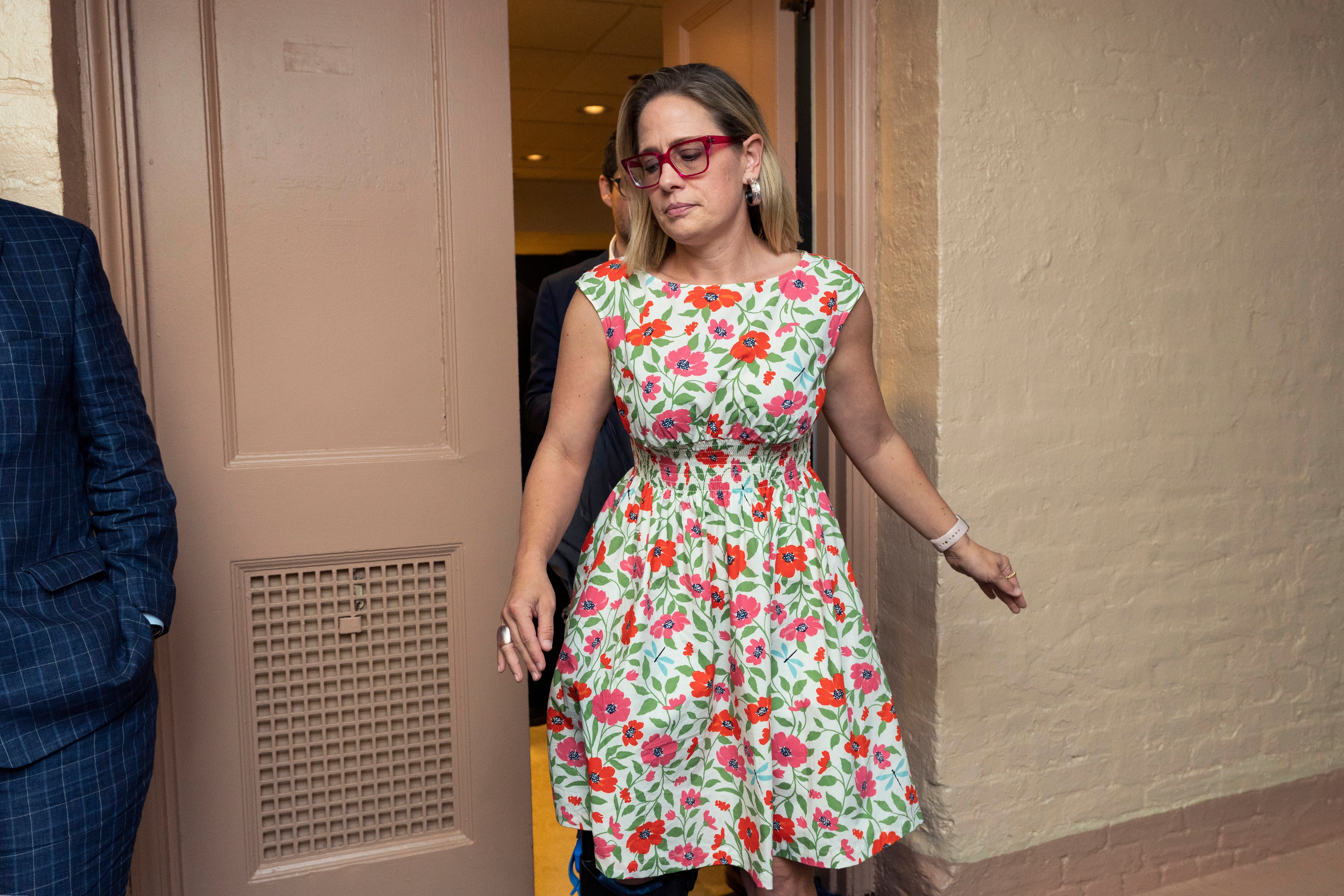Progressives want Kyrsten Sinema out. But history points to primary heartbreak
Senators have certain advantages, and Arizona’s purple status benefits Sinema, writes Eric Garcia


Progressives despise no fellow Democratic senator more than Kyrsten Sinema. They may feel frustration towards Sen Joe Manchin, but he hails from West Virginia, where every county voted for Donald Trump, and the state has been trending rightward for the past two decades. So, many think he has a legitimate excuse when he frequently stymies their agenda, opposes filibuster reform, worries about the cost of their massive social spending bill and effectively killed their election reform bill.
But Ms Sinema is from Arizona, and her election in 2018 was seen as the first crack in the wall that led to Democrats’ victory there in 2020. Like Mr Manchin, Ms Sinema opposes ending the filibuster and said she opposes spending $3.5 trillion on Democrats’ social spending bill on items like child care, tuition-free community college, home care for elderly and disabled people, and including dental, hearing and vision coverage to Medicare. But, unlike Mr Manchin, who has proposed spending around $1.5 trillion on the package, Ms Sinema hasn’t given a price tag that would be comfortable for her.
The left-wing of the Democratic Party’s frustration with Ms Sinema has led some to wonder whether they could stage a primary challenge to her, not unlike the one Alexandria Ocasio-Cortez pulled off against Joe Crowley in 2018 in a House race, or Rep Cori Bush did in Missouri last year. Unlike West Virginia, Arizona has been trending Democratic. But just because some left-leaning Democrats may not like Ms Sinema, doesn’t mean that it would not be incredibly arduous to stage a primary challenge against her.
First and foremost, a primary campaign against an incumbent senator is incredibly difficult. The last time an incumbent senator lost a party nomination was in 2012, during the Tea Party movement when Richard Mourdock beat longtime incumbent Sen Richard Lugar in Indiana, only to lose to Democrat Joe Donnelly in the general election after he said that a pregnancy that came from rape was still “something that God intended to happen.”
Most people remember the Tea Party wave in 2010 for its primary challenges, such as when Mike Lee knocked off Sen Bob Bennett in Utah. But that same year Joe Miller beat Sen Lisa Murkowski in the Alaska GOP primary, while on the Democratic side, then-Rep Joe Sestak beat Sen Arlen Specter in Pennsylvania. But Mr Sestak largely beat Mr Specter because Mr Specter defected from the Republican Party before Mr Sestak ultimately lost to now-Republican Sen Pat Toomey. Meanwhile, Ms Murkowski staged a successful write-in campaign against Mr Miller.
And before then, the last time there was a successful Democratic primary against an incumbent, Joe Lieberman ran as an independent and beat Ned Lamont in Connecticut in 2006.
Similarly, if Ms Sinema were to lose a primary and a more left-wing or even more mainstream Democrat were to ultimately lose the seat in a general election, progressives would (rightly or wrongly) be blamed for losing a Senate seat, especially in 2024, when Democrats will try and win Arizona again after Joe Biden pulled off a narrow victory. It is also entirely possible that many voters might support Mr Biden while passing over a progressive Senate candidate and not voting at all in a down-ballot race.
Then there is the factor of sheer numbers. While the Pew Research Centre found last year that 47 percent of Democrats identify as liberals, moderates and conservatives make up about 51 per cent of the party. Similarly, a survey from OH Predictive Insights, based in Phoenix, found that while only 56 per cent of Democrats in Arizona approve of her, compared to the 80 per cent that fellow Sen Mark Kelly enjoys, that is still a majority and it would be hard to convince many voters that Ms Sinema is the wrong person for the job.
In addition, incumbents generally benefit from the national infrastructure of the party backing them, such as the Democratic Senatorial Campaign Committee. This would make a primary challenge all the more difficult.
Similarly, because Arizona is relatively new as a state where Democrats can be competitive, there are not many Democrats with statewide name recognition the way Ms Sinema does. This is partially why primary challenges are oftentimes easier to do on the district level; it’s a smaller area of land and a smaller group of people to build name recognition.
This is not to say that Ms Sinema is entirely in the clear. While Democrats might never back a primary opponent against her, they might not intervene as strongly on her behalf, especially if they feel Mr Biden is performing well enough in the state to carry any Democrat over the finish line (especially in a time where fewer people split their tickets in elections).
But Ms Sinema has plenty of advantages that insulate her from the threats she would face if she were still in the House of Representatives or from a more reliably Democratic state.



Join our commenting forum
Join thought-provoking conversations, follow other Independent readers and see their replies
Comments